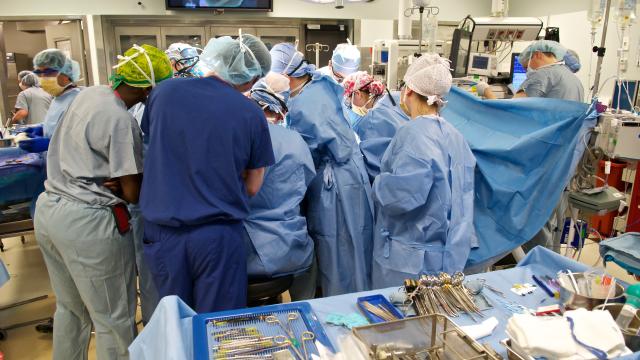A five-year follow-up of six face transplant patients has found significant improvements in their sensory and motor functions, along with reported improvements to their quality of life.
Much progress has been made since the first partial face transplant was performed at a French hospital in 2005. This cutting-edge procedure offers a much-needed option for individuals with severe facial disfigurements, typically the result of traumatic injuries. The operation involves the transfer of facial structures from a recently deceased human donor to a patient in need.
Crucially, these surgeries offer more than just a cosmetic fix — they’re integral to improving a patient’s physical health and psychological well-being.
The Plastic Surgery Transplantation program at Brigham and Women’s Hospital in Boston is a world leader in this area, having completed six face transplants — four full and two partial — within the last five years. These six individuals represent the largest sample of patients to have undergone the procedure in the United States.
A five-year followup to assess their progress and flag any ongoing issues was published earlier this week in the New England Journal of Medicine.
“We are moving beyond the point of asking whether a patient in need will survive receiving a face transplant — we have seen that we can do this safely,” said Bo Pomahac, a co-author of the paper and the principal investigator for the program at Brigham and Women’s Hospital, in a release from the medical centre.
“We are now asking — can we quantify how much our patients benefit, and what challenges do we need to work on?”
As the followup showed, the procedure is working about as well as can be expected given its nascent state of development.
Facial motor function “improved both during and after the first year after transplantation,” noted the authors in the report. The patients attained, on average, about 60 per cent of their maximum motor function by the five-year point.
The team also observed “significant improvement” in their patients’ ability to discern hot from cold and to sense pressure within the first year following their transplant.
“In our previous studies, we reported that patients can speak better, eat better, breathe better. These aspects are important as well,” said Pomahac.
“Here, we report that the return of motor function is in line with what you would see if you reconnected a severed nerve, and that sensory function appears to improve to near normal. Face transplants have given these patients enough functionality to be able to socially reintegrate in a way that would not have been possible before.”
Importantly, the “patients’ self-reported quality of life,” the author wrote, “trended toward improvement.” There was also a “trending decrease” seen in standard measures of depression, “indicating lower risk of a clinical depression episode”.
That said, the patients still face a tremendous burden in terms of the medications required to keep rejection at bay. Facial transplants “require the patient to make a lifetime commitment to taking medications that suppress the body’s immune system,” according to a Brighman Hospital information page.
Unfortunately, rejection bouts were common, with each patient having to endure between two and seven serious episodes.
The immunosuppressants used to prevent rejection can often lead to undesirable side-effects, but the good news is that these six patients did not experience new cases of diabetes, hypertension or blood disorders, except one patient who was diagnosed with hypertension two-and-a-half years after the surgery.
“It is important to realise how young the field of face transplantation really is,” said co-senior author Leonardo Riella in the release.
“While we had used knowledge gained from other solid organ transplants, the face transplant is a complex structure that includes one of the most immunologically challenging tissues of all: The skin. While we have witnessed great success so far, the challenges to minimise immunosuppression toxicity and reduce rejection rates continue.”
So all-in-all, a very encouraging five-year report. There’s still plenty of room for improvement, but this pioneering procedure is quickly maturing into a safe, effective and viable option.
